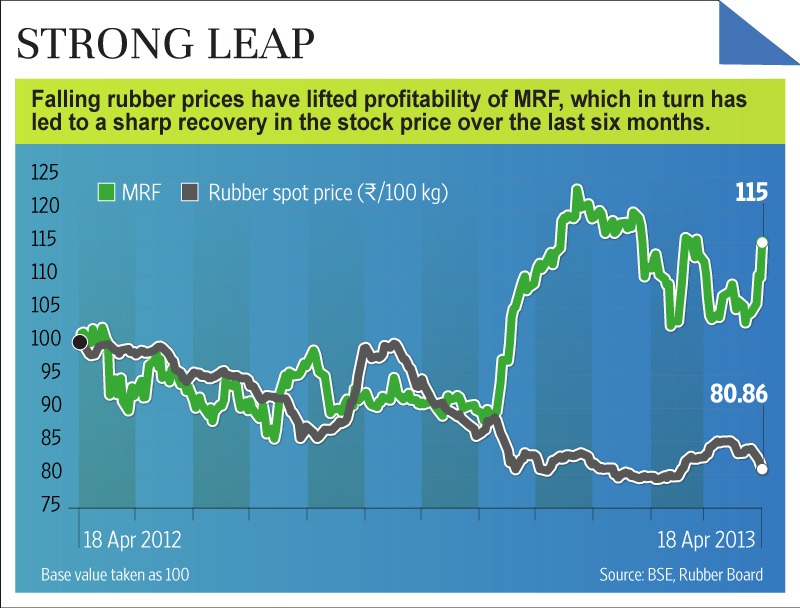Tyre maker MRF Ltd’s stock vaulted by 4.81% to Rs.12,898.05 as the company’s March quarter net profit beat Bloomberg’s consensus estimates by a wide 27%. In spite of a 2.9% dip in net revenue during the quarter to Rs.2,906.3 crore, the firm’s net profit skyrocketed by 40.3% to Rs.210.6 crore.

The price of crude (used in tyre manufacture) is also falling. Given relatively stable wage costs, the lower raw material costs pushed up MRF’s operating margin by 440 bps to 15.3% from a year ago.
The trend looks likely to continue. According to Surjit Arora, analyst at Prabhudas Lilladher Pvt. Ltd, “International rubber prices fell by 7% in the last few days as demand from China moderated.”
MRF has passed on the benefit of falling rubber prices to customers—in March it cut tyre prices in the replacement market by 2-2.5%, which could soften profit margins going forward if volumes do not pick up.
However, MRF’s management is concerned about the auto slowdown. The flipside of falling commodity prices is poor demand. The commercial vehicles segment, which accounts for about half the revenues, continues to contract. Meanwhile, original equipment demand from other auto segments is sluggish.
Indeed, MRF’s robust marketing network and brand equity has helped retain replacement market sales, which accounts for three-fourth of total sales. Yet, there appears to be a fall in customer footfall in the replacement market in the last few months.
The company has other challenges, too. A wage negotiation in its Kottayam plant has hit output. The plant is currently operating at a third of its capacity and contributes nearly 15% to revenue. Besides, the industry slowdown could be a reason for flat revenue during the quarter.
The road ahead is likely to see MRF, like its peers, cruise along with margins supported by low input costs. The stock has gained 14.5% in the last 52 weeks and trades at a reasonable seven times estimated earnings per share for fiscal 2014. A strong uptick from these levels would hinge on economic recovery that would spur auto sector demand.
Source: livemint.com





























